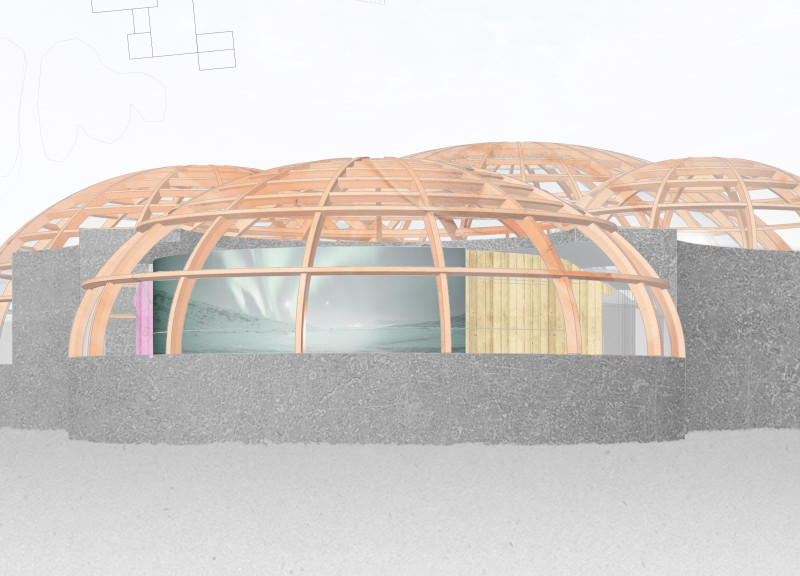5 key facts about this project
The HYLKI greenhouse restaurant is located in Mývatn, Iceland, and serves as both a dining space and a growing environment for food. Its design is inspired by the nearby Lake Mývatn, Hverfjall volcano, and the Mývatn Natural Baths, tying the restaurant closely to its beautiful surroundings. The building combines elements of sustainability and local culture, creating a unique experience for those who visit.
Architectural Form
The design features a circular shape that takes the form of a dome. This dome is functional and attractive, allowing for ample natural light, which is important in a region where fresh produce is hard to come by due to cold weather. The dome faces south, ensuring that the largest greenhouse space benefits from direct sunlight, which helps plants grow throughout the year.
Spatial Arrangement
The HYLKI layout includes two greenhouses. The larger dome contains the main greenhouse, while a smaller, more compact greenhouse is positioned between a multifunctional area and the main structure. This design enables smooth movement throughout the restaurant. The kitchen is located to the west, allowing for easy service to a series of small dining units where customers order their meals, enhancing the overall experience of eating at the restaurant.
Material and Aesthetic Approach
While specific materials are not discussed in detail, the design reflects the warmth and character of a typical Icelandic town. Wooden elements bring color and texture that contrast with the starkness of the surrounding landscape. This choice fosters a welcoming environment, inviting visitors to enjoy their meals while appreciating the natural beauty outside.
The central dining space encourages guests to walk through and explore both the restaurant and its connection to the outdoors. Large windows frame picturesque views of the Icelandic scenery, emphasizing the relationship between the indoor dining experience and the stunning landscape that defines the area.






















































